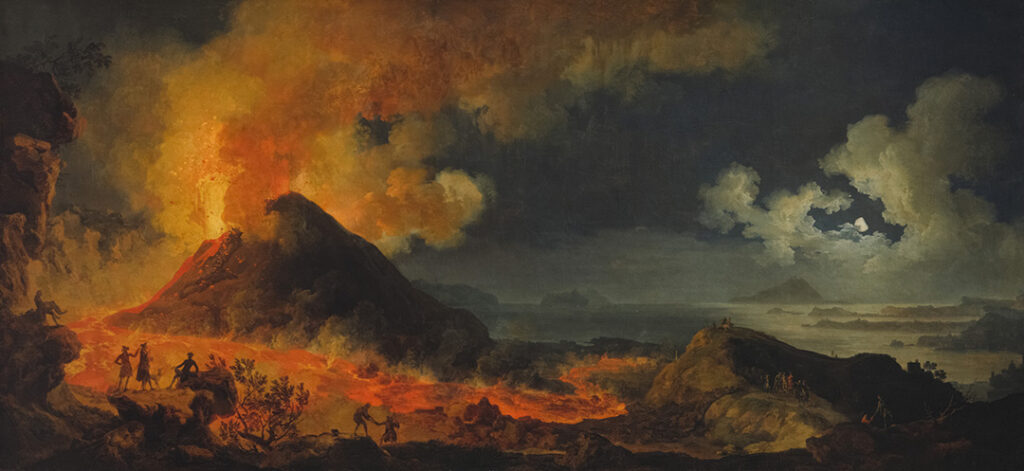Apocalypse now: Religious predictions and their significance for society
Apocalypse now: Religious predictions and their significance for society
In challenging times, more people turn to apocalyptic beliefs. Let’s see how religious convictions play a role during these difficult moments.
In today’s uncertain world, there is a noticeable comeback of apocalyptic beliefs, indicating a renewed interest in end-time predictions and catastrophic scenarios.[1] This stands out, especially as people face new and challenging situations. In this scenario, apocalyptic religions become a way to understand society’s collective mindset.[2]
Historical development
Apocalyptic beliefs have a rich history, originating in ancient Mesopotamian and Egyptian texts and finding expression in Jewish scriptures, especially prophetic books like Daniel. Early Christianity played a significant role in shaping these beliefs. The medieval and Renaissance periods maintained interest, and the Protestant Reformation added new interpretations.[3] Modern times witnessed diverse expressions, including secular apocalyptic visions linked to political ideologies and scientific progress. Globally, apocalyptic beliefs feature in Hinduism,[4] Buddhism, Islam, and indigenous traditions, persisting prominently in popular culture and various movements, showcasing their enduring and adaptable nature.[5]
Common threads: cosmic endings and ethical guiding stars
In various belief systems, there are common symbols representing significant aspects of apocalyptic beliefs. For instance, in Christianity, the ‘Four Horsemen’ from the Book of Revelation, specifically in chapters 6-8, symbolise conquest, war, famine, and death, portraying catastrophic events. Similarly, Hinduism’s concept of Kali Yuga, described in texts like the Vishnu Purana, and Norse mythology’s Ragnarök from the Prose Edda, depict shared themes of a period marked by upheaval and subsequent renewal, offering a glimpse into the shared imagery associated with the end times across diverse cultures.[6]
During challenging times, ethical guidelines surface across diverse belief systems to navigate crises. In Christianity, the Good Samaritan parable in Luke 10:25-37 emphasises principles of compassion and charity. In Buddhism, ethical guidelines such as Right Action and Right Livelihood, found in the Noble Eightfold Path (Magga), offer a moral compass, as detailed in foundational texts like the Dhammacakkappavattana Sutta. These shared ethical values underscore a universal acknowledgement of the significance of moral responsibility and communal well-being amid adversity.[7]
Worlds apart: Christian apocalypse vs. secular crisis views
In our intricate world, it is vital to differentiate the Christian apocalypse’s theological aspects and biblical prophecies from broader, secular views on societal catastrophes. The Christian perspective focuses on theological teachings and biblical prophecies, envisioning divine intervention and specific events leading to a transformative end-times scenario. Rooted in sacred scriptures, particularly the eschatological narratives in the Bible like the Book of Revelation, the anticipation is grounded in the belief that these events will culminate human history under divine guidance.[8]
Conversely, general societal catastrophes embrace a broader secular perspective, encompassing natural disasters, pandemics, geopolitical crises, and global challenges. While both concepts share the theme of upheaval and potentially catastrophic outcomes, the sources, interpretations, and implications significantly differ. Delving into these distinctions offers a comprehensive understanding of how religious and secular worldviews shape perceptions of imminent crises.[9]
Shaping societal perceptions
The impact of apocalyptic beliefs on society is manifested through their portrayal in various forms of media and their incorporation into entertainment. In the realm of media, apocalyptic scenarios take centre stage in movies, television shows, and literature, profoundly influencing public perceptions. For instance, blockbuster movies like Armageddon and Mad Max: Fury Road depict catastrophic events, exploring themes of survival, resilience, and the human condition in the face of imminent doom.[10] This not only reflects societal fears and anxieties but also normalises apocalyptic narratives, contributing to a widespread cultural acceptance of such themes.[11]
Furthermore, religious motifs related to apocalyptic themes seamlessly make their way into various forms of entertainment. Whether through subtle symbolism or explicit narrative elements, these motifs become integral parts of storytelling in literature, music, and visual arts. Consider the iconic imagery in works like T.S. Eliot’s The Waste Land, where the poet draws on apocalyptic symbols to convey a sense of cultural disillusionment. In the music industry, artists often incorporate religious motifs in their lyrics or album artwork, such as the use of biblical imagery in Johnny Cash’s The Man Comes Around.[12]
Psychological dynamics
Apocalyptic beliefs cast a nuanced psychological impact, evoking both fears and hopes amid impending scenarios. Rooted in religious doctrines or societal concerns, these narratives trigger tangible fears linked to catastrophic events. Simultaneously, they instil hopes for survival and renewal, creating a psychological landscape where individuals delicately navigate between dread and anticipation.[13]
During crises, faith plays a pivotal role. For believers, faith becomes a profound source of solace, offering a framework to comprehend and cope with adversity. It instils a sense of purpose, meaning, and trust in a higher guiding power. Conversely, non-religious individuals may find psychological resilience in personal beliefs, community support, or philosophical perspectives. This intricate interplay underscores how belief systems profoundly shape psychological responses during uncertainty and crisis.[14]
Beliefs in crisis: A dance of apocalypse and society
In the interplay of Christian apocalypse and societal catastrophe views, we are in a captivating dance shaping how we see crises. From shared imagery to different perspectives, these dynamics echo in media, entertainment, and our collective thoughts. Exploring this woven story, we see how beliefs colour our understanding of challenges, adding a rich layer to our experience in uncertain times.
Our team of analysts conducts research on topics relating to religion and society. Find out their relationships on the EARS Dashboard.
Sources
[1] Die vorletzten Tage: Warum uns die Apokalypse so sehr fasziniert
[2] „Denn was früher war, ist vergangen“. Die Unwiderstehlichkeit von Apokalypsen
[3] Kurze Geschichte der Apokalyptik
[5] Kurze Geschichte der Apokalyptik
[6] Die Welt geht unter! Wer geht mit?
[7] Die Welt geht unter! Wer geht mit?
[10] Die besten Apokalypse-Filme: Hier herrscht die Endzeit!
[11] Endzeit oder Erlösung: Warum wir kurz vor der Apokalypse kurz Luft holen sollten
[12] Die besten Apokalypse Horrorfilme
[13] Vom Zeichen der Götter bis zur Apokalypse. Religion als Krisenverstärker oder -management.
[14] Vom Zeichen der Götter bis zur Apokalypse. Religion als Krisenverstärker oder -management.






